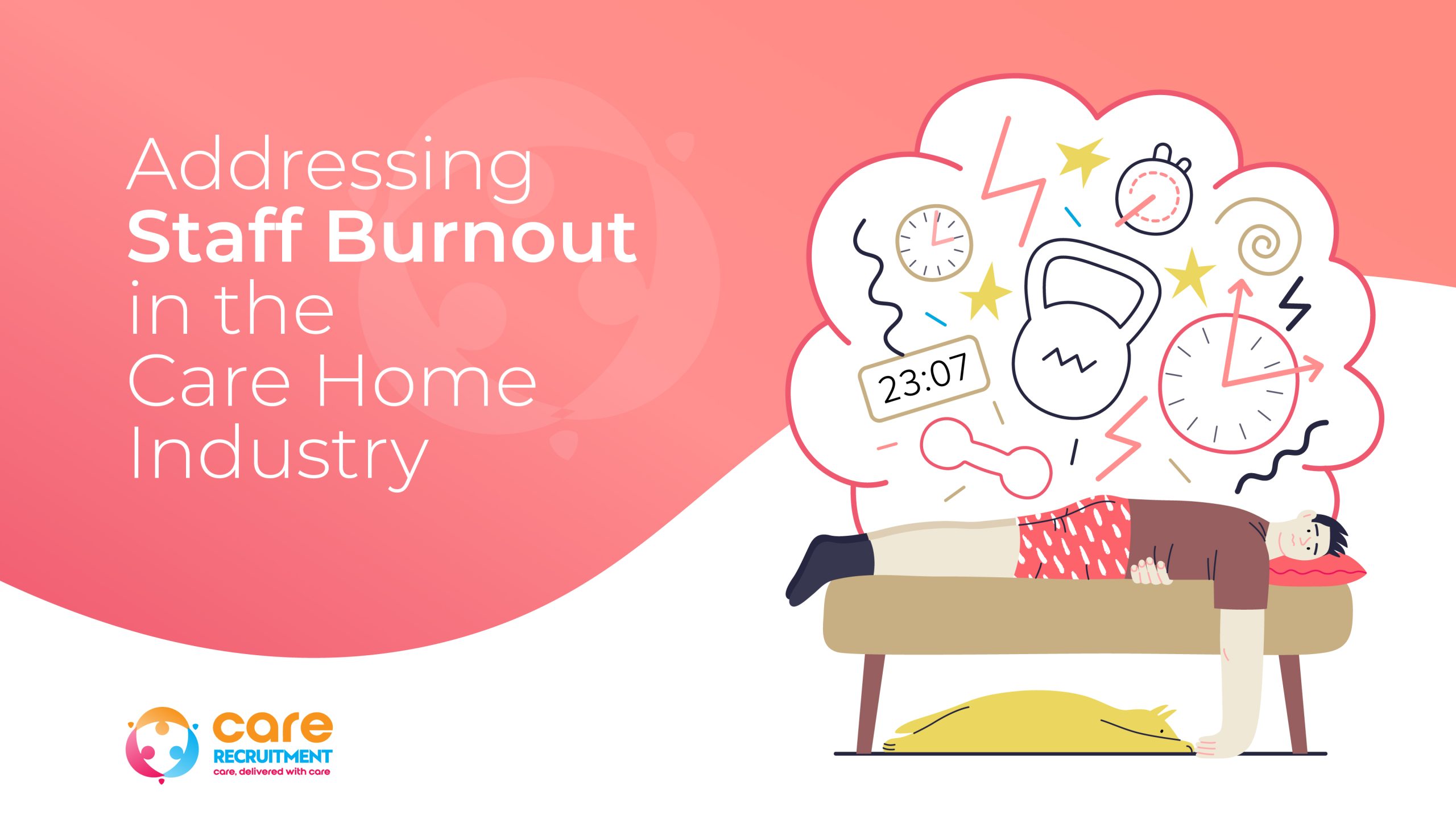Addressing Staff Burnout in the Care Home Industry
The care home industry plays a crucial role in providing essential support and assistance to our ageing population. However, the demanding nature of this field can lead to a significant challenge: staff burnout. As caregivers tirelessly strive to provide the best care for residents, their own well-being can often take a backseat. In this blog, we will delve into the issue of staff burnout in the care home industry and explore strategies to address and prevent it.
Understanding Staff Burnout
Staff burnout is a state of emotional, physical, and mental exhaustion caused by excessive and prolonged stress. Caregivers in the care home industry are particularly susceptible to burnout due to long working hours, high patient-to-staff ratios, and emotionally demanding situations. Recognizing the signs of burnout is essential to prevent it from negatively impacting both employees and residents.
Key Factors Contributing to Burnout
- Heavy Workload: Caregivers often face heavy workloads, leading to fatigue and a sense of overwhelm.
- Emotional Strain: Dealing with the illness and loss of residents can take a toll on caregivers' emotional well-being.
- Lack of Control: Limited autonomy and decision-making power can lead to feelings of frustration and helplessness.
- Lack of Support: Inadequate support from supervisors and colleagues can intensify feelings of isolation.
- Monotonous Routine: The repetitive nature of caregiving tasks can contribute to a sense of boredom and disengagement.
Effective Strategies to Address Staff Burnout
- Promote Work-Life Balance: Encourage caregivers to prioritize self-care by providing flexible schedules and sufficient time off between shifts.
- Training and Development: Offer regular training sessions to enhance caregivers' skills, boost their confidence, and empower them to handle challenging situations.
- Enhance Communication: Create an open and supportive communication environment where caregivers can express their concerns, share their experiences, and seek assistance when needed.
- Recognise and Reward: Acknowledge and appreciate caregivers' hard work through regular recognition programs and rewards for exceptional performance.
- Provide Counseling Services: Offer access to counselling or therapy services to help caregivers cope with the emotional toll of their work.
- Team Building Activities: Organize team-building activities to foster camaraderie, reduce isolation, and create a sense of belonging among staff members.
- Implement Rotational Shifts: Introduce a rotation system to vary caregivers' tasks and responsibilities, preventing monotony and burnout.
- Create a Relaxation Space: Designate a quiet and peaceful space where caregivers can unwind and recharge during breaks.
- Encourage Physical Activity: Promote physical well-being by offering fitness programs or discounts on gym memberships.
- Foster a Supportive Culture: Develop a culture of empathy, respect, and mutual support, where staff members are encouraged to help each other.
Preventing Burnout Through Leadership and Management
- Lead by Example: Managers and supervisors should model healthy work habits and prioritize self-care to set a positive example for their team.
- Regular Check-ins: Conduct one-on-one meetings with caregivers to discuss their well-being, challenges, and career goals.
- Flexible Accommodations: Be open to reasonable accommodation requests that can help caregivers balance their personal and professional responsibilities.
- Continuous Feedback: Provide constructive feedback and acknowledge improvements, fostering a sense of growth and progress.
- Empower Decision-Making: Delegate decision-making authority whenever possible, empowering caregivers and making them feel valued.
- Conflict Resolution: Address conflicts and issues promptly, creating a harmonious work environment that minimizes stress.
Addressing staff burnout in the care home industry is not only crucial for the well-being of caregivers but also directly impacts the quality of care provided to residents. By implementing strategies that promote work-life balance, enhance communication, and foster a supportive culture, care homes can create an environment where employees thrive, leading to improved resident satisfaction and overall success in the industry. As we work towards a future of compassionate and sustainable caregiving, addressing staff burnout must remain a top priority.
